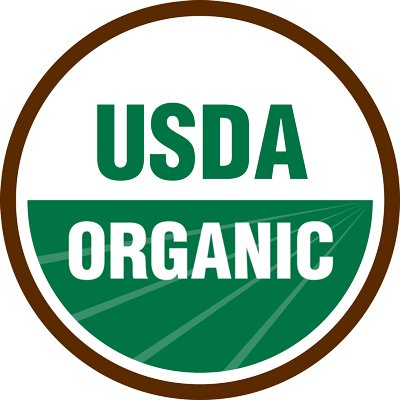Why Buy Organic (Part 1)
A recent poll of US consumers reported that 51% think that the organic label is nothing more than an excuse to charge more money, with only 29% recognizing that organics are highly regulated by the USDA. But the fact is that the organic label is not an excuse, it is more like a medal of honor given to agricultural products. The organic label stands for and honors a lot of important issues in our food system from the way agricultural products are grown and harvested to the way the growing processes affect the environment.
So why buy organic? Because there are important health benefits to eating organic foods, as well as countless environmental advantages that go along with organic food production. And that high price often associated with organics? That is an example of true cost economics.
True Cost Economics
Conventional crops are highly subsidized by the US government, which means that we pay for them with our tax dollars regardless of whether or not we buy those products, and if or when we do buy conventional goods, we pay a little less at the grocery store in return. Additionally, the cost of growing conventional crops excludes or externalizes the costs of cleaning up pollution and health problems associated with their production. A study from Iowa State University estimates anywhere from $5 billion to $16 billion is spent annually to combat the externalized costs of conventional agriculture, such as erosion, water pollution, and harm to wildlife. (link is external) In other words, the price you see on the shelf for conventional products is not the true cost. Those prices are artificially low and we are paying for the additional associated costs with our tax dollars, and/or by compromising our health and the health of the environment around us.
Health Benefits
There are three main health benefits associated with organics: minimized contact with dangerous chemicals, reduced exposure to antibiotics and growth hormones, and increased nutritional content. The USDA organic standards (link is external) strictly limit the use of chemicals like pesticides, herbicides, and fungicides. In organic agriculture, pests, weeds, and diseases are primarily managed using mechanical or physical practices like the release of beneficial insects to control pests and laying down mulch to smother weeds. Only as a last resort can organic producers use a USDA organic-approved pesticide, most of which are derived from natural sources. And that is good news, because not all of the chemical residues left behind from conventional farming methods can simply be washed away by rinsing fruits and vegetables. In testing, the USDA has found as many as 47 different pesticide residues on a single apple.
When it comes to meat and poultry, organics reduce your exposure to antibiotics and growth hormones. The overuse of antibiotic drugs aids the evolution of antibiotic-resistant bacteria. That means if you get sick, the drugs doctors have available to make you well might not work. While conventional methods use antibiotics routinely to try to protect livestock from unclean and crowded living conditions likely to make an animal sick, organic farmers provide living areas that promote the health and natural behavior of the animals and only use antibiotics to treat sick animals.
And to top it off, some studies even show that organics are more nutritious than conventional foods. In a study published in March of this year on the cost organics, Consumer Reports states that “organic milk contains about 60 percent more heart-healthy omega-3 fatty acids than non-organic, a benefit that also extends to yogurt and cheese, according to research.”
Next week, we will continue this discussion with information about the environmental advantages of organics and concerns surrounding GMO foods in Why Buy Organic (Part 2).

